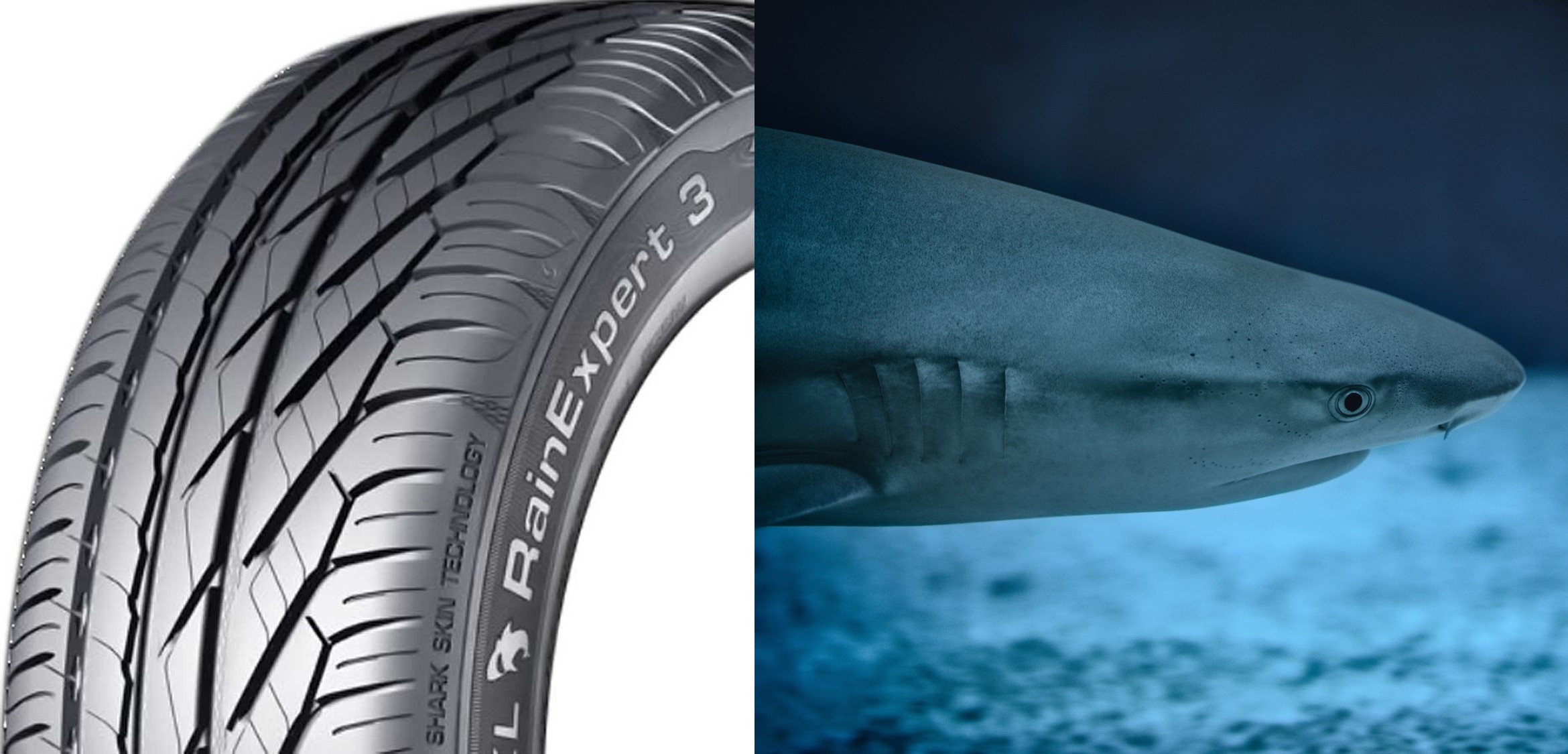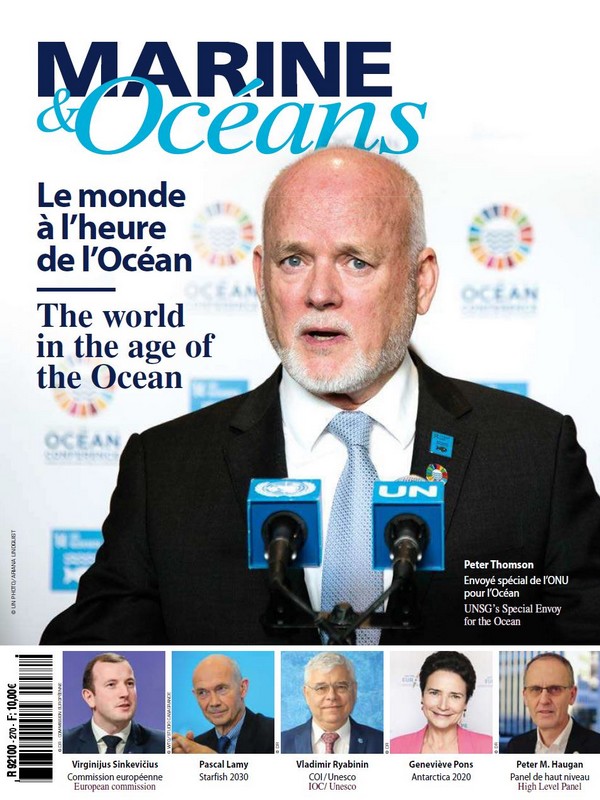 The ocean, an immensity of beauty and freedom, of nature and adventure, but also of biodiversity and genius, an area of high technology, inventiveness, strategies and resilience, where every day man rediscovers the interest he has in admiring it, protecting it, in being inspired by it, to live, and to live better. This is called biomimicry. Explanations.
The ocean, an immensity of beauty and freedom, of nature and adventure, but also of biodiversity and genius, an area of high technology, inventiveness, strategies and resilience, where every day man rediscovers the interest he has in admiring it, protecting it, in being inspired by it, to live, and to live better. This is called biomimicry. Explanations.
By Alain Renaudin
Founder of Biomim’expo, Chairman of NewCorp Conseil
———–
Biomimicry is not a scientific discipline in the commonly accepted definition, it is an approach, a methodology, a philosophy, a way of thinking, sometimes by “unformatting” one’s own thinking, by tacking from one discipline to another, from one point of view to another. Taking inspiration from the living to learn from the models and strategies developed and optimised by nature to adapt and survive. This is the invitation of biomimicry or bio-inspiration.
Marine life, so fragile and so essential to life on Earth, can also save mankind. It is in our own interest to be inspired by it and to protect it, to protect ourselves. Biomimicry is a journey, and the sea is the “Promised Land” of the life explorers: an Eldorado of genius, a never-ending source of inspiration for innovation in all fields. Here are a few pages of this travel diary of marine biomimicry.
Let’s start with energy and undulation. The sea is all about movement, and the choice of all marine organisms that need to move is that of undulation, allowing the sailfish to reach speeds of 110 km/h, as fast as a cheetah, or enabling the 30-ton humpback whale to jump completely out of the water.
The EEL Energy company, headed by Franck Sylvain, found its inspiration there (based upon an invention by Jean-Baptiste Drevet) to develop an undulating tidal turbine that converts hydrokinetic energy into mechanical and then electrical energy. The EEL Energy membrane floats like a flag in the water and reproduces the undulating movement of some aquatic vertebrates, notably eels. In order to move, these species propagate a wave along their body, and the eel is the most efficient example. The spectacular interest of this tidal turbine is that it produces energy from a tidal current with a speed of only 2m/s, allowing it to cover 10 times more areas than existing tidal turbines. After testing a prototype in the IFREMER test tanks in Boulogne-sur-mer, the experimentations carried out in real conditions during 2019 revealed very encouraging perspectives.
Following the same concept, but this time applied to yachting, the young startup FinX, led by a brilliant young engineer, Harold Guillemin, intends to revolutionize the propulsion of boats by introducing an electric engine delivering performance boosted by the force of undulation.
The flexible membrane, that looks like a 45-rpm vinyl record, vibrates from its circumference, driven by vertical pistons, towards the central orifice, propelling water with 30 to 40% more power than observed with a traditional propeller system. The videos available on the Internet are captivating and stunning. If you add to this the interest in terms of reduced noise and decreased impact on biodiversity (end of the chopper effect!), there is indeed many reasons to believe that a revolution is underway.
This quiet force of undulation also has applications in the field of industry, with as much advantages in terms of performance, with the Wavera pumps from the company AMS R&D led by Eric Guillemin. There, technology is also at the origin of the CorWave system designed to help your heart beat with blood pumps proposing an alternative to the current rotary pumps that sometimes present risks of shear stress on blood cells.
This lighter and more energy-saving membrane, which also preserves blood integrity, reduces complications due to coagulation.
While the humpback whale takes advantage from the force of undulation, it has another specific asset to increase its power and agility at it moves in turns. This advantage takes the form of protrusions and growths (tubercles) that can be observed on the leading edges of its large fins. These protuberances create a multitude of whirlpools that increase its lift and prevent it from stalling in tight turns. If you consider these fins as the whale’s wings, you will understand that the American company Whalepower used them to add this tubercle effect to the blades of its wind turbine, thus increasing their performance and resistance to strong winds. This innovation may result in other applications for rudders, hydraulic turbines, or helicopter rotor blades.

Let’s continue our journey with some of the greatest representatives of the ocean, and get closer to the sharks to focus on their capacity to reach stunning speeds. Fast and agile, their secret lies in a skin to which nothing adheres, in such way that it creates a kind of second skin, like a thin layer made of air, which literally allows them to “fly” in the water by optimizing its laminar flow. And yet this skin is not smooth. It is covered with its famous sharp, tooth-like placoid scales, the skin’s denticles. These denticles protect the animal by preventing the adhesion of organisms present in the water that could contaminate or disturb it, such as microorganisms, algae, crustaceans, etc.
An American company, Sharklet, replicated the denticles on a micron scale (1000 microns in a millimeter) to create an antibacterial surface commercialised in the form of stickers put on doors and handles in hospitals and clinics.
This coating allows to lower the propagation of bacteria by 94%. If the shark’s skin helps it go fast, it can also help you slow down. Based on analyses of the interaction between water and shark skin, the automotive supplier Uniroyal developed a specific tire tread design to invent the Shark Skin Technology (SST). This bio-inspired solution provides optimal water evacuation from grooves and improves resistance to aquaplaning. This discovery received the prestigious Red Dot Design Award. In addition, these RainSport3 tires reduce braking distance by 8% in wet conditions. For your information, in case it may inspire you, in sharks, the skin of the females is thicker than that of the males in order to resist their bites during mating rituals!
When it’s not about surface engineering, it is the structure of the material in itself that is great. This is what happens in the case of the abalone’s nacre shell that inspired the idea of an ultra-resistant ceramic to a joint team of researchers from the Ceramics Synthesis and Functionalisation Laboratory (CNRS/Saint-Gobain), the Geology Laboratory of Lyon: Earth, Planets and Environment (CNRS/ENS Lyon/University Claude Bernard Lyon 1), and the Materials: Engineering and Science Laboratory (CNRS/INSA Lyon/University Claude Bernard Lyon 1). This bio-inspired material is nearly ten times more resistant than a conventional ceramic. The secret of nacre comes from its “brickwork” structure of superimposed lamellae which “forces” cracks to propagate through a tortuous path, making them difficult to break thus making this nacre-inspired composite material extremely strong. On the other side of the Atlantic, McGill Canadians carried an experimentation and micro-cracked glass, imitating the structure of an abalone shell, making it 200 times stronger.
Energy is movement. It is also light, which is omnipresent, despite appearances, in the deep. The deeper you go, the more light you find… alive. This is the bioluminescence of the abyss. Bioluminescence is a biochemical reaction between a protein called luciferin, and an enzyme named luciferase. The French physicist Raphaël Dubois revealed a mystery, and experimented that the combination of luciferin and luciferase can catalyse the oxidation of luciferin in the presence of oxygen resulting in the emission of photons, and therefore light. More than 75% of the animal species living in the darkness of the deep have the capacity to produce light (Séverine Martini and Steven Haddock, Monterey Bay Aquarium Research Institute, California).
The Glowee startup has the dream of an alternative public lighting generated by the natural properties of micro-organisms. Here, a gene is inserted to bacteria allowing the production of luciferase to catalyse the bioluminescence reaction. Using a different approach, the laboratory Tangram Lab from the architecture office of the same name, works in close collaboration with the Mediterranean Institute of Oceanology. In January 2018, on the occasion of the Jacques Rougerie Foundation’s international contest, the lab was awarded the “Jury’s Favourite” prize for its BiolumReef project.

Sometimes the ocean is also the reign of the invisible. An invisible that is sometimes hidden only a few centimetres from our toes, on the beaches, at low tide, in Brittany. After reading this paper, you will never walk again, the way you used to do, on those little swirls made of sand you see here and there. You may even have an incredible story to tell to your children and grandchildren. This is the story of the researcher, who founded a business, Franck Zal and his sandworm, Arenicola marina.
As a researcher specialising in blood flow and oxygen transport, Dr. Zal was interested in the survival conditions of marine organisms in extreme environments, when one day, as an authentic Breton and CNRS researcher, he became interested in the secret of the Arenicola marina, wondering how this animal could “survive” at low tide. The worm, deprived of its oxygen supply while waiting for the sea to come back at high tide, was able survive for more than 6 hours without breathing: Jacques Mayol’s dream. Going further in his research work, Franck Zal made a prodigious and fantastic discovery. He found a form of extracellular haemoglobin that could capture and retain oxygen at a high density, but above all a haemoglobin that could be transfused to humans, compatible with all our rhesus, and freeze-dried!
In other words, a universal blood bag that can be stored and made available everywhere, including in areas requiring medical operations in the event of natural disasters, or in areas of armed conflicts. The applications are extraordinarily interesting, to increase the viability of the grafts before patients are operated, or to enhance the healing conditions in case of complex surgeries.
To stay in the medical field, and still among the wonders of nature, let’s take a look at the peacock mantis shrimp or “multicoloured shrimp” (Odontodactylus scyllarus), an animal found in the Indian Ocean as well as in the western part of the Pacific Ocean. This shrimp can strike with a force thousands of times greater than its own weight (up to 1500 newtons), to break the shells of the delicious bivalves it preys on … and also the glass of aquariums. Watch your fingers!
Thus, studied for its interest in the process of manufacturing ultra-resistant materials, this mantis shrimp also interests researchers for its stunning eyes. They are actually made of ommatidia, which are themselves constituted of photoreceptor cells with fine cellular extensions, microvillosities, that can filter polarized light, a light that “vibrates” in a single direction. Filtering such light allows enhanced detection of contrasts (think of filters on cameras or sunglasses), but also … cancer! Indeed, in cancers, reflexion of polarized light is different as from healthy tissues. This property inspired Justin Marshall and his colleagues from the University of Queensland in Australia to develop a camera that detects tumours, something our visual system is normally unable to do. Here, the camera converts invisible images into colours we can perceive, revealing affected tissues.
The sea is also a home – for mankind, as oceanographer Jacques Rougerie invites us to dream of – but of course, above all, for marine organisms themselves. Create the conditions of a habitat and you will (re)create the conditions of life, this is the approach of regenerative nurseries, to no longer just protect and stop destroying, but regenerate and repopulate. This is the new requirement. This is, for example, the Bathy Bot deepwater artificial reef project made of concrete by additive manufacturing by the Vicat collective, Tangram Architects, Fondation Jacques Rougerie, Soliquid and the Mediterranean Institute of Oceanography. This artificial deepwater reef will be immersed in the Mediterranean Sea by the IFREMER’s submarine Nautile in the spring of 2020.
Another form of nursery, this time inspired by sea urchins, is being developed by the startup Seaboost, in Marseille. The purpose of this structure is to offer micro-habitats/nurseries for fish on damaged coastal sites: quays, pontoons, offshore platforms, piers, etc. The habitat, nursery and substrate functions of the sea urchins are particularly appreciated by certain juvenile species that find refuge there. By combining marine and ecological engineering, the startup is particularly focusing on the regeneration and survival of marine species in harbour basins.
Let’s end this journey talking about urban micro-algae to underline the link that exists between the sea and the land. Microalgae are micro-organisms capable of growing in both fresh and sea water. They enable the process of photosynthesis by synthesizing organic matter from carbon dioxide and water, while releasing oxygen. They play a major role in the quantity of oxygen available on Earth. In addition, because of their ability to appreciate phosphate, nitrogen and sulphur, these microalgae are particularly interesting and useful in terms of wastewater treatment. X-TU architects collaborated with the CNRS laboratory “GEPEA” from the University of Nantes and with AlgoSources Technologies to develop a concept that aims at growing microalgae on the walls of our cities. To achieve this, they created flat photo-bioreactors where microalgae grow within a layer of water of a few centimetres retained between two glass walls. They work as thermal solar panels that regulate the temperature of the buildings in summer and winter. The savings on the energy needs of the building can reach 50%. Beyond the energy aspects, the micro-algae produced can also be harvested for food or cosmetic purposes. Other experiments are also underway to use them for air pollution control. For all these reasons, the development of algo-culture has become a major perspective for our future habitats and cities. Microalgae also play an important role in the carbon cycle, and their sensitivity to certain pollutants make them efficient bio-indicators.
In the end, the sea is never far from our lives, and the ocean, with the richness and genius of its amazing marine biodiversity, is at the heart of our future. France has a major role to play, through the academic and industrial competence of its research teams in the field of marine biomimicry, but also through the size and richness of its maritime domain, the second largest in the world after the United States, thanks to its overseas territories.


